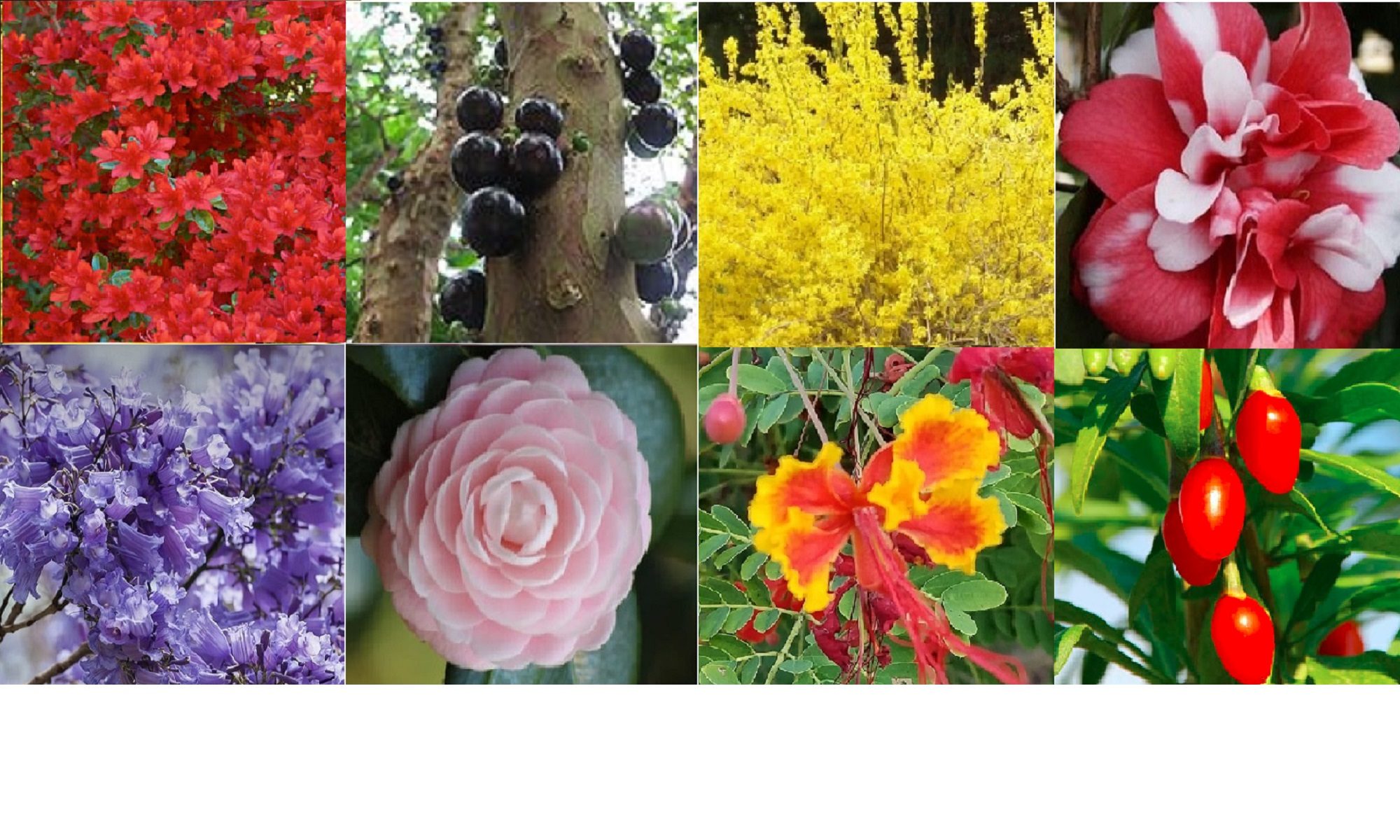Exotic herb plants, medical herb or tropical Plants received from ExoticGrower Company were grown in a tropical Southeast Florida. The exotic plant varieties grew under a shade house (60-70% sun) or out in the 100% open area in containers. SE Florida has very harsh humidity and strong sun radiation. The shade house is critical to protect plants from too much sun and heat.
This following information was just updated (April 2019). It’s a two page sheet included with the exotic plant shipments, herb plants and non cactus/succulents plants.
Check your growing environment and USDA zone. If you are not in the USDA growing zone for the type of exotic plant you selected then you need to grow the plant in a container. Many exotic herb plants, tropical and medical plants require protection from cold weather and/or extreme heat. Check to see how much sun or shade a plants can handle. These are general instructions.
Planting
In ground Planting 6 pot size plant or larger plant when received: Dig a hole at least 1 ft by 1 ft. If you are planting a larger exotic plant (larger root system) make the hole at least twice the size of the root system. Back fill 25% of the hole with the proper type of soil, compost or even manure mixture. Check the internet for the proper soil mix for your type of plant.
If planting a herb, fruit or similar exotic plant then use a good airy rich soil or compost when your do the actual plant planting. Stay away from moss based mixes or ones that develop a top crust. Again check the proper soil type for your plant.
Container planting: Pick a pot at least twice the size of the exotic plant root system. Clay pots and pots with holes are better to control moisture, root breathing and heat. The roots need air to grow well and survive. It’s better that you do not OVERSIZE the pot for the plant. Soil nutrients get depleted and it is better to repot in size increments so soil is replenished and the roots grow strong.
Fill the bottom and sides of the pot with the soil you plan to use. Then plant the tree using a good airy potting soil or more compost depending upon the type of plant. Coir based mixes are great!
Steps:1
- In ground planting of exotic plants, water the planting holes one day before planting the small plants.
- Plant in the late afternoon to avoid the hot sun the first day.
- Do not plant the root ball more than 1/2″ below the soil. The roots need to breath. Look at the exotic plant trunk color to see the coloration difference near the soil one. Keep the area that was exposed to the air above the soil!
- If growing in a pot (especially a bonsai pot) then spread out the roots. Try not to damage the roots. We use chop-sticks to separate the root ball to gently spread the roots out.
- Add a root hormone such as Dyna-Gro K-L-N to the water the first 21 days.
- If the exotic plant tends to fall over then add support. Put a stick into the hole and use a twist tie to hold the plant upright. When you insert the support stick try not to damage any roots under the soil! If using a bonsai pot, wire down the plant to support it.
- Pack soil around the seedling base lightly.
- Water lightly for the first few days.
- After 30 days add a good fertilizer with micro nutrients such as Dyna-Gro Grow or Dyna-Gro Foliage.
- Research your growing environment to make sure you are planting the type of exotic plants properly.
- Remember these are good general planting instructions. Not all plants grow the same. If you are not sure check the internet for more information on soil types and light requirements.
Complete nutrition results in superior plant growth. Why choose anything less for your plants? There are 20 elements necessary for optimum plant growth. Air and water supply carbon, hydrogen and oxygen. Macro-nutrients are required by plants in large amounts. Micro-nutrients are required in smaller amounts. Eliminate any of these elements, and plants will display abnormal growth, deficiencies or may not reproduce. The following is a brief guide to the role played by each of these essential nutrient elements. Dyan-Gro Grow and Dyna-Gro Foliage contain the macro-nutrients needed for plants. Compare the ingredients to see what your fertilizer is missing!
 Neem (azadirachta indica) – Neem exotic plant (may medical uses) are semi-desert plants USDA zones 9 – 11 . They are NOT herb plants. If you treat them like a regular herb plant they may die! Over watering is the number one killer of neem plants. Number two is the wrong soil. The soil needs to be fast draining and airy! What is a neem leaf? It’s the WHOLE frond not the individual very small petals. You may lose some or most of your fronds when planting. Expect it to take up to 3..4 weeks to recover if planted properly and give the right sun light/water.
Neem (azadirachta indica) – Neem exotic plant (may medical uses) are semi-desert plants USDA zones 9 – 11 . They are NOT herb plants. If you treat them like a regular herb plant they may die! Over watering is the number one killer of neem plants. Number two is the wrong soil. The soil needs to be fast draining and airy! What is a neem leaf? It’s the WHOLE frond not the individual very small petals. You may lose some or most of your fronds when planting. Expect it to take up to 3..4 weeks to recover if planted properly and give the right sun light/water.
 Moringa plants (moringa oleifera) USDA zone 9-10 – Retains its water in the roots similar to many desert plants. They like water but the soil must be fast draining and airy.
Moringa plants (moringa oleifera) USDA zone 9-10 – Retains its water in the roots similar to many desert plants. They like water but the soil must be fast draining and airy.
 Christia Vespertilionis plants. These are new to the USA. Since we are in a Tropical area they grow great as long as we keep them in 65-75 sunlight. With less sunlight the leaves will not turn the red color. Too much sun and they burn. They like to dry out for 1-2 days between watering. We use a soil mix with less perlite than in our desert/semi-desert plants. Various sites on the internet says they will go dormant and lose leaves in cooler climates. However, I would treat them as semi-tropical plants and protect them from cold weather.
Christia Vespertilionis plants. These are new to the USA. Since we are in a Tropical area they grow great as long as we keep them in 65-75 sunlight. With less sunlight the leaves will not turn the red color. Too much sun and they burn. They like to dry out for 1-2 days between watering. We use a soil mix with less perlite than in our desert/semi-desert plants. Various sites on the internet says they will go dormant and lose leaves in cooler climates. However, I would treat them as semi-tropical plants and protect them from cold weather.
How to Make soil Airy: Add perlite to mixes. Add small NON porous rocks. Use clay pots to allow air flow. Make sure there are holes in the bottom of the pots.
How to retain some moisture but not too much: Use coir based mixes not Moss! Moss mixes tend to create crusts on top of the soil which causes water and air flow problems.
Advice: The number one thing we hear from people is “My Gardener said xxxxx” Be careful, the majority of gardeners are not exotic plant experts. They may know about local plants/grass/trees but not about rare exotic plants. There are many different growing environments and micro-environments in all areas. Do your research and understand plants are living things that will do great but sometimes no matter what you do they may die. It may be the water, the nutrients, the sun light, heat, soil, cold, bugs or ?? causing problems. Enjoy growing your plants. Please visit our blog for more information.

